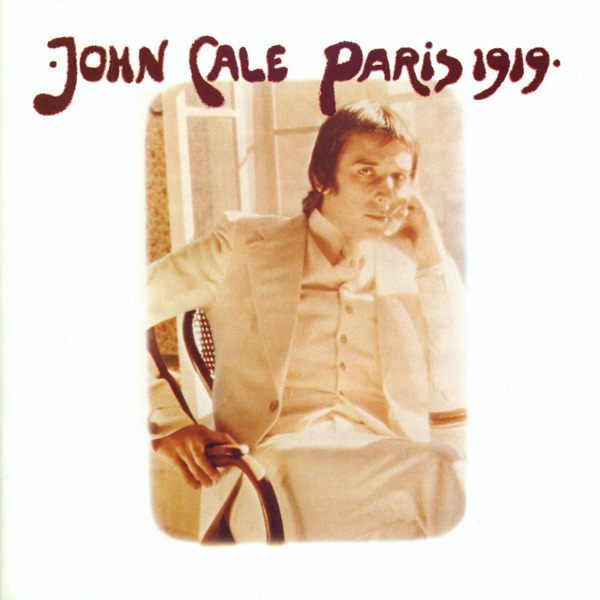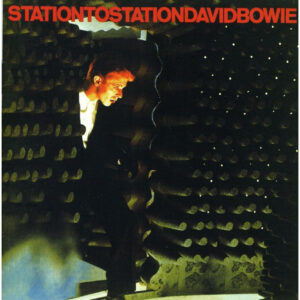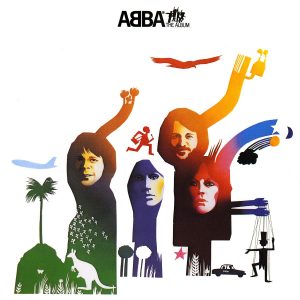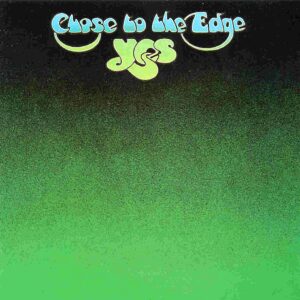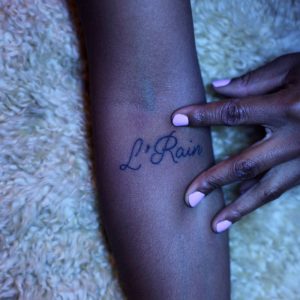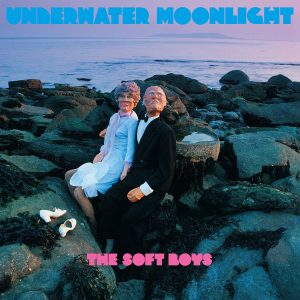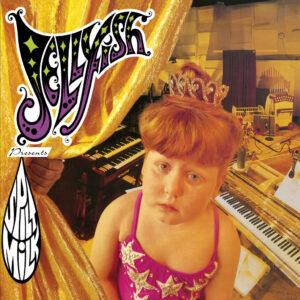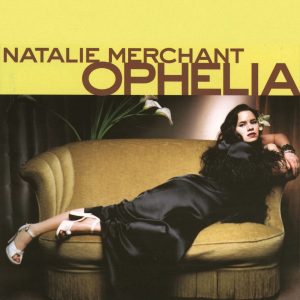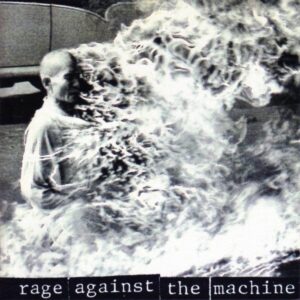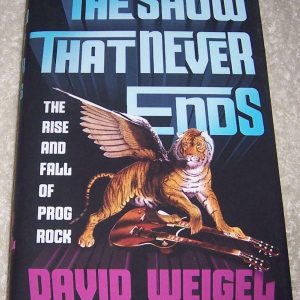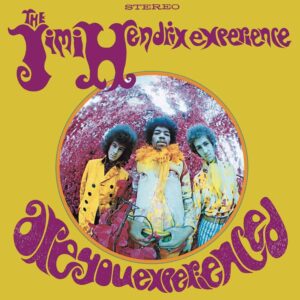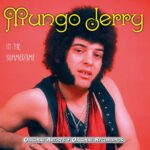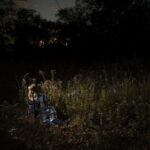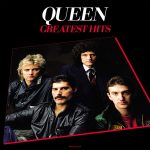
While his former Velvet Underground bandmate Lou Reed enjoyed a larger public profile, John Cale has always been like an invisible hand guiding the alternative music scene. Cale started his career in the early 1960s in the contemporary classical scene. He studied the viola, and worked alongside contemporary composers like John Cage, Aaron Copland, and LaMonte Young.
Introduction
In the mid-1960s, Cale joined forces with Reed and brought his classical training, like the use of drone notes, to the Velvet Underground. He produced famous albums by The Modern Lovers, The Stooges, Patti Smith, and Nico. He also appeared on albums by Nick Drake, Eno, and Super Furry Animals.
Even further under the radar is Cale’s lengthy and artistically successful solo career. It’s more accessible than his avant-garde reputation would suggest. His haughty Welsh vocals preclude him from mass success, but he’s tuneful. During his solo career, he’s covered territory from the avant-garde of The Academy In Peril, the baroque pop of Paris 1919, and the punk-influenced Sabotage.
I’m only familiar with some of Cale’s post-1970s albums, but even in his later career, he’s remained a restless explorer. He hasn’t touched the mainstream much, but he was part of the process that saw Leonard Cohen’s ‘Hallelujah’ transformed into a modern standard. It was his succinct version on a Cohen tribute album that saved the song from obscurity and inspired Jeff Buckley’s version.
Because he’s spread his attention over many different interests, Cale’s discography can seem disjointed and inconsistent. But Paris 1919 and Fear are well worth getting to know, and there’s plenty else of interest as well. If you enjoy other auteurs like Bowie and Eno from the same era, Cale’s worth exploring.
I haven’t covered all of Cale’s albums, so here’s a complete discography of his studio work, and a couple of his most significant live albums. Let me know if I’ve missed anything important:
John Cale Album Reviews
Fsvourite Album: Paris 1919
Overlooked Gem: Fragments of a Rainy Season
Vintage Violence

1970, 7.5/10
John Cale’s debut album owes more to the down-home pastoral feel of The Band’s first records than the primitive garage rock of his former group’s White Light, White Heat. Vintage Violence is effortlessly melodic and more formally composed than much of his other work; Cale states that he was following the lead of pop acts like The Bee Gees. Vintage Violence was recorded with the band Grinderswitch, and rehearsed and recorded within three days, a speed that’s not betrayed by the album’s tasteful and tight veneer.
The most memorable songs are the atmospheric pieces that close the album – ‘Ghost Story’ is driven by an eerie organ part, while ‘Amsterdam’ is pared down almost to an acoustic guitar strum and evocative lyrics (“She’s back from Amsterdam/And I think the journey did her well”). The pretty ‘Big White Cloud’ is arranged and conducted by Cale himself, while the opening ‘Hello There’ showcases Cale’s piano fluency. The only piece that’s remotely avant-garde is the bonus track ‘Wall’, six awesome minutes of electric viola scraping.
In contrast, most of Vintage Violence is plain gorgeous and inherently musical; it just doesn’t feel as significant as Cale’s best work, even if it’s surprisingly hooky and accessible. It showcases a light and playful side of Cale that would become submerged as his recorded oeuvre became darker and more demanding.
The Academy in Peril
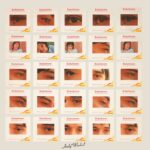
1972, not yet rated
Cale’s second solo album (although he also collaborated with Terry Riley on Church of Anthrax). I’m not very familiar with this, so will come back and cover it later.
Paris 1919
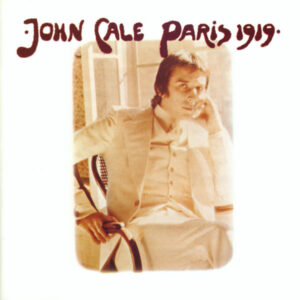
1973, 9.5/10
If Vintage Violence was a surprisingly mild debut for Cale, Paris 1919is even more genteel, musically sophisticated and literate. It’s a step forward from the uncertain, if musically intuitive, Vintage Violence, its themes of 20th-century history, culture, and nostalgia giving it a more unified feel than its predecessor.
Surprisingly, some of the musical backing comes from Little Feat members Lowell George and Richie Hayward; while their influence is obvious in the mid-record rocker ‘Macbeth’, they’re delicate and restrained elsewhere. The UCLA Symphony Orchestra also features on the record, giving tracks like ‘The Endless Plain Of Fortune’ a sophisticated veneer with their rich orchestration, and the orchestration and Cale’s piano are the dominant textures on the record.
The only tracks that deviate from the sophisticated, orchestrated sound are the rocker ‘Macbeth’, which is out of place on the otherwise subdued record, and the creepy, half-whispered closer ‘Antarctica Starts Here’. The title track is perhaps Cale’s finest recorded song, with its elegant melody and its instrumentation almost entirely comprised of orchestration. ‘Hanky Panky Nohow’ is less controversial than its name would imply, while ‘Graham Greene’ feels like a Ray Davies composition.
Paris 1919 is full of elegant melodies and arrangements that never veer close to cheap sentimentality or saccharine.
Fear
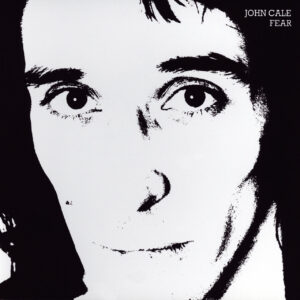
1974, 9/10
The rough edges that were almost entirely absent from Vintage Violence and Paris 1919 start to surface on Fear. This is largely a result of collaborating with Roxy Music alumni Eno, Phil Manzanera and Andy Mackay, who capture the abrasiveness and the musical experimentation that was largely absent from his earlier solo records.
In retrospect, the Eno and Cale liaison seems almost inevitable. Both were the sonic innovators in their respective bands before they were squeezed out by their band’s leaders after two albums.
Cale writes that “the main point was to keep on doing the stuff that Lou had refused to keep doing in the Velvet Underground”. Fear is the mature successor to the experiments on White Light/White Heat. At the same time, it’s also a logical sequel to his first two solo records, as half the tracks here are still pretty ballads that would have fitted fine onto either of those albums. With this divergent mix of styles, Fear stands as Cale’s quintessential work, showing his ability to write a melodic piano song ‘Ship Of Fools’ and follow it up with the abrasive, experimental ‘Gun’ with its conceptual “joint solo” from Manzanera and Eno.
‘Fear Is A Man’s Best Friend’ sets the tone of the record, starting as accessible piano pop before disintegrating into diving basslines, chaotic guitar and Cale’s screaming, inspired by a college performance art piece entitled “Scream At A Potted Plant Until It Dies”. Out of the other rock-oriented material, Richard Thompson guests alongside Manzanera and Bryn Haworth on the awesome triple slide guitar attack of ‘Momamma Scuba’, another sonic innovation.
The centre-piece though, is the eight minutes of ‘Gun’, based around a hypnotic guitar riff, then unleashing an outlandish joint solo between Manzanera and Eno, with Eno treating Manzanera’s guitar solo through his synthesiser. On the quieter half of the record, a pretty baroque piano figure underpins the gorgeous ‘Ship Of Fools’, ‘Buffalo Ballet’ presents a romanticised take on the colonisation of America, while ‘Emily’ is delicate and graceful.
Fear showcases both Cale’s tender side, and his abrasive, experimental side, so it’s an excellent place to get a feel for his solo career. It’s worth tracking down The Island Years which features Fear and his two subsequent Island albums in their entirety, as well as bonus tracks.
Slow Dazzle
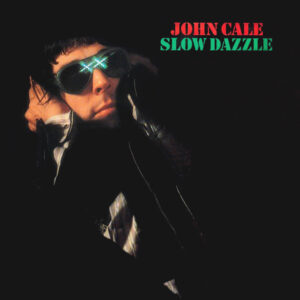
1975, 7/10
John Cale’s fourth pop album was his least coherent yet, following the template of Fear but with more scattershot results, veering from mid-1970s mainstream pop to cathartic rockers and experimental pieces that would fit comfortably onto the first Velvet Underground records. Cale was bursting with creative melodies and chord sequences at this time, but there’s virtually nothing linking these tracks together – it’s just a compendium of ten random Cale tracks, and the mainstream piano pop of songs like ‘Rollaroll’ and ‘Ski Patrol’ is melodic but loses significance next to intense material like ‘Guts’ and a psychotic cover of ‘Heartbreak Hotel’.
There’s at least one classic here, the opening ‘Mr Wilson’, a tribute to the architect of the Beach Boys albums that Cale kept on high rotation, featuring an athletic vocal and the geographically pertinent lyric “Wales is not like Cali-forni-ay in any way.” ‘Guts’, a reaction to Cale’s wife’s affair with Kevin Ayers on the eve of the Eno/Nico/Cale/Ayers June 1 1974 live album, is full of chunky guitar riffs and psychotic lyrics, while ‘Darling I Need You’ bounces along on a bright country beat. More abstractly, ‘The Jeweller’ recalls the Velvet Underground with its drone and bizarre monologue, while on the other extreme, the crisp lead guitar and the female backing vocals on ‘I’m Not The Loving Kind’ could have come from a Wings album.
There’s some really strong Cale music on Slow Dazzle, and it’s surprisingly listenable given its apparently aimless diversity, but Cale’s capable of far better.
Helen Of Troy
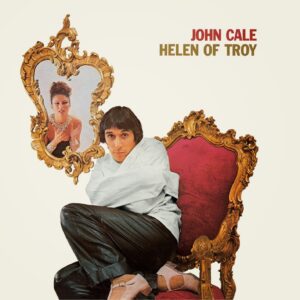
1975, 7.5/10
Helen of Troy is in the vein of Cale’s previous record Slow Dazzle, but stronger and nastier. Working with a primary core of musicians – guitarist Chris Spedding, bassist Pat Donaldson, and drummer Timmi Donald – Cale’s approach to songcraft was becoming more improvisational. At the same time, there’s more noticeable orchestration than the previous albums, with Robert Kirby, who also worked on Nick Drake’s Five Leaves Left, adding strings and choir. A choir adds drama to ‘My Maria’, while the orchestra punctuates the title track and adds depth to the torch song ‘I Keep A Close Watch’. Like Slow Dazzle, Helen Of Troy is eclectic in mood, possibly a fair reflection of Cale’s mental state at the time, although the liner notes point out that the studio renditions were merely working sketches of the “full-blown psychodramas” that the songs became on tour.
On the gentle side, the most notable song is ‘I Keep A Close Watch’, which Cale unsuccessfully wished Sinatra to cover; it’s not difficult to imagine it becoming a standard if it wasn’t buried in the middle of a semi-obscure mid-1970s album by a weird arty psychotic dude who used to be in the Velvet Underground. Cale also covers the Modern Lovers’ ‘Pablo Picasso’ – he produced their debut album – and his take is more venomous than Richman’s wide-eyed naivety. Even nastier is ‘Leaving It Up To You’, which was removed from later versions of the album for its Charles Manson references (“I know we could all feel safe/Like Sharon Tait”). ‘Baby, What You Want Me To Do?’ is a surprisingly effective blues rocker, while ‘Sudden Death’ is a dramatic closer with its foreboding piano runs and organ swells. The first half is weaker than the second; ‘Cable Hogue’ sounds much better in its acoustic reading on Fragments Of A Rainy Season.
Helen Of Troy was Cale’s last studio album for Island Records, and his next full-length album wouldn’t be released until 1979, an album of new material recorded live in concert.
Sabotage/Live
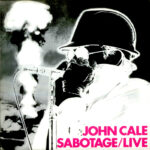
1979, not yet rated
Just picked this up and haven’t had enough time to form an opinion yet.
Music for a New Society

1982, 8/10
John Cale describes his mood in creating Music for a New Society as grotesque. A sequel to the commercially successful Honi Soit, it’s a pained statement. Its intense and minimal performances leave plenty of white space. ‘Changes Made’ features a full band arrangement with Blue Oyster Cult guitarist Allen Lanier, but the rest of the album is sparse.
‘Damn Life’ uses Beethoven’s ‘Ode To Joy’ as its foundation, slowing it down and sucking all the joy out of it. Cale accompanies himself on acoustic guitar for the tuneful and insistent ‘Chinese Envoy’. There are dramatic touches with dramatic percussion strikes and a bagpipe coda on a reworked version of ‘(I Keep A) Close Watch’, but the focus is on Cale’s pained vocals and minimal keyboards.
Music for a New Society is a harrowing listen, but there are the bones of strong songs here, and it’s a strong and unique entry in Cale’s catalogue. The album was out of print for a long time, but Cale re-released it in 2016, along with a disc of reworkings titled M:FANS.
Words for the Dying
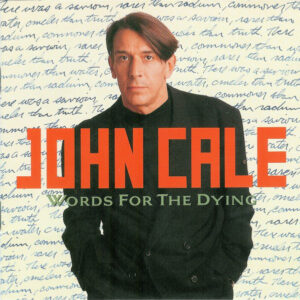
1989, 6.5/10
John Cale set music to four of Welsh poet Dylan Thomas’ poems in 1982 as a response to the Falklands War; as Cale writes in the liner notes “while the Argentine Flag was being raised on South Georgia, I was feverishly embarking on a comprehensive setting of the collected poems of Dylan Thomas”. The most famous of the poems is ‘Do Not Go Gentle Into That Good Night’, originally written for Thomas’ dying father, with its line “rage against the dying of the light.”
Because the suite of four Thomas pieces, along with orchestral interludes and preludes, is only about half an hour long, it’s padded out by a couple of piano pieces and the song ‘The Soul of Carmen Miranda’, making Words for the Dying feel a little incoherent. Cale’s authoritative voice is effective enough for an orchestral setting, and it’s well orchestrated – not surprising given Cale’s schooling in classical music.
As much as the orchestral setting works with the songs, it’s arguably easier to hear the material on Cale’s 1992 live album Fragments of a Rainy Season, where he plays three of the songs accompanied only by his piano.
Fragments of a Rainy Season

1992, 9/10
Fragments of a Rainy Season is a live album, compiled from different dates on John Cale’s 1992 tour, with Cale performing completely solo and accompanying himself on piano and acoustic guitar.
Fragments cherry picks selections from his back catalogue, with highlights like ‘Paris 1919’, ‘Guts’, and ‘(I Keep A) Close Watch’ from his 1970s albums. The album also showcases a strong 1980s for Cale; the three songs from Words for the Dying sound much better in this stripped-down context, as well as tracks from his collaborations with Brian Eno and Lou Reed. Fragments for a Rainy Season closes with Cale’s version of Leonard Cohen’s ‘Hallelujah’ – it was Cale’s version that Jeff Buckley picked up on and turned into a standard.
With a strong selection of songs and intimate performances, Fragments is a masterful live album. If I was limited to just one John Cale album, Fragments of a Rainy Season would be my pick.
Hobo Sapiens
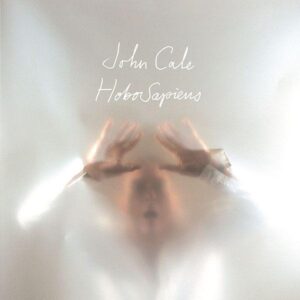
2003, 7.5/10
Cale was an admirer of the albums that Beck had created with ProTools. In his sixties, Cale signed with EMI and was let loose in a recording studio with 21st-century technology. The perpetually creative Cale utilises these tools effectively, and Hobo Sapiens is full of synthetic textures and trip-hop beats. There’s an addictive loop and bassline in ‘Bicycle’.
While Cale generally sounds comfortable in this environment, he also successfully plays the age card. ‘Magritte’ has a venerable and authoritative vocal, while ‘Things’ might be the wittiest lyric Cale’s ever written, concerning aged love “The sexual exuberance of a concubine checking my carburettor one more time/With the passion of a thoroughbred and the sensitivity of a moose.”
The biggest issue with Hobo Sapiens is that it’s overlong. The second version of ‘Things’, titled ‘Things X’ feels superfluous. The album could easily have lost some other songs at the end.
Hobo Sapiens isn’t among John Cale’s strongest albums, but it’s impressively respectable all the same – I can’t imagine many of Cale’s contemporaries being able to pull off an album in this territory with such verve and grace.
blackAcetate

2005, 5.5/10
blackAcetate is the sequel to Hobo Sapiens, but where that album was glorious techno colour, Black Acetate is black and white, with rock guitars and funk beats. John Cale is taking inspiration from 21st-century guitar bands like The Strokes, and while he inhabits their space with verve and dignity, it’s simply not as diverse and exciting as his previous effort.
Cale is still trying things – blackAcetate begins with the intense falsetto of ‘Outta The Bag’, and there’s the weird sound collage of ‘Brotherman’ where Cale proclaims “I write reams of this shit every day.” And there are exciting songs – ‘Sold Motel’ is hooky and propulsive, while ‘Turn the Lights On’ ventures almost into metal territory with its heavy guitars.
Black Acetate is my least favourite Cale album I’ve covered on this page; it’s creative, but its monochromatic sound is wearying.
Ten Favourite John Cale Songs
Paris 1919
Andalucia
Gun
Fear (Is A Man’s Best Friend)
(I Keep A) Close Watch
Chinese Envoy
Child’s Christmas in Wales
Ship of Fools
Things
Guts
Back to 1970s Album Reviews….
Related Pages
About
Aphoristic Album Reviews is almost entirely written by one person. It features album reviews and blog posts across a growing spectrum of popular music.
Review Pages
Read about the discographies of musical acts from the 1960s to the present day. Browse this site's review archives or enjoy these random selections:
Blog Posts
I add new blog posts to this website every week. Browse the archives or enjoy these random selections:
